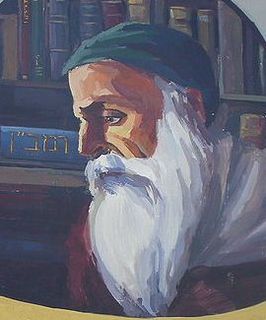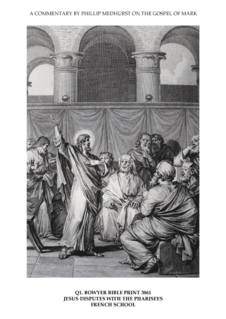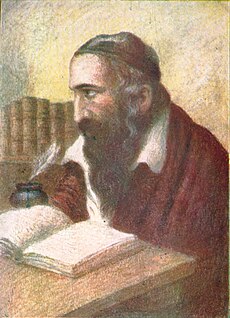Related Research Articles

Judaism is an Abrahamic ethnic religion comprising the collective religious, cultural, and legal tradition and civilization of the Jewish people. Judaism is considered by religious Jews to be the expression of the covenant that God established with the Children of Israel. It encompasses a wide body of texts, practices, theological positions, and forms of organization. The Torah is part of the larger text known as the Tanakh or the Hebrew Bible, and supplemental oral tradition represented by later texts such as the Midrash and the Talmud. With between 14.5 and 17.4 million adherents worldwide, Judaism is the tenth largest religion in the world.
Messianic Judaism is a modern syncretic Christian religious movement that incorporates some elements of Judaism and Jewish tradition with Evangelical Christianity. The movement emerged in the 1960s and 1970s from the Hebrew Christian movement and the Baptist organization Jews for Jesus founded in 1973 by Conservative Baptist minister Martin Rosen.
Gershom ben Judah, best known as Rabbeinu Gershom and also commonly known to scholars of Judaism by the title Rabbeinu Gershom Me'Or Hagolah, was a famous Talmudist and Halakhist.

Moses ben Nahman, commonly known as Nachmanides, and also referred to by the acronym Ramban and by the contemporary nickname Bonastruc ça Porta, was a leading medieval Jewish scholar, Sephardic rabbi, philosopher, physician, kabbalist, and biblical commentator. He was raised, studied, and lived for most of his life in Girona, Catalonia. He is also considered to be an important figure in the re-establishment of the Jewish community in Jerusalem following its destruction by the Crusaders in 1099.

Jewish philosophy includes all philosophy carried out by Jews, or in relation to the religion of Judaism. Until modern Haskalah and Jewish emancipation, Jewish philosophy was preoccupied with attempts to reconcile coherent new ideas into the tradition of Rabbinic Judaism, thus organizing emergent ideas that are not necessarily Jewish into a uniquely Jewish scholastic framework and world-view. With their acceptance into modern society, Jews with secular educations embraced or developed entirely new philosophies to meet the demands of the world in which they now found themselves.
Religious pluralism is a set of religious world views that hold that one's religion is not the sole and exclusive source of truth, and thus recognizes that some level of truth and value exists in other religions. As such, religious pluralism goes beyond religious tolerance, which is the condition of peaceful existence between adherents of different religions or religious denominations.
There is no specific doctrinal view of Jesus in traditional Judaism. Monotheism, a belief in the absolute unity and singularity of God, is central to Judaism, which regards the worship of a person as a form of idolatry. Therefore, consideration of Jesus as deity is not an issue in traditional Jewish thought. The rejection of Jesus as Messiah has never been a theological issue for Judaism because Jewish eschatology holds that the coming of the Messiah will be associated with events that had not occurred at the time of Jesus, such as the rebuilding of The Temple, a Messianic Age of peace, and the ingathering of Jews to their homeland.
Ibn Tibbon, is a family of Jewish rabbis and translators that lived principally in Provence in the 12th and 13th centuries.

David Friedländer was a German banker, writer and communal leader.

This article relates to a number of episodes in the New Testament in which Jesus was rejected in accordance with the Jewish tradition which was followed during his lifetime.

Petrus Alphonsi was a Jewish Spanish physician, writer, astronomer, and polemicist, who converted to Christianity in 1106. He is also known just as Alphonsi, and as Peter Alfonsi or Peter Alphonso and was born Moses Sephardi). Born in Islamic Spain, he mostly lived in England and France after his conversion.
Eliyahu Baal Shem was a Polish rabbi and kabbalist who served as chief rabbi of Chełm. One of the most eminent Talmudists of his generation, he is recorded as the first person known by the epithet "Ba'al Shem" having been considered a great saint and believed to have used miraculous powers to create a golem.

Shabbatai ben Meir HaKohen was a noted 17th century talmudist and halakhist. He became known as the Shakh, which is an abbreviation of his most important work, Siftei Kohen on the Shulchan Aruch. His rulings were considered authoritative by later halakhists.
The Disputation of Barcelona was a formal ordered medieval debate between representatives of Christianity and Judaism regarding whether or not Jesus was the Messiah. It was held at the royal palace of King James I of Aragon in the presence of the King, his court, and many prominent ecclesiastical dignitaries and knights, between Dominican Friar Pablo Christiani, a convert from Judaism to Christianity, and Nachmanides, a leading medieval Jewish scholar, philosopher, physician, kabbalist, and biblical commentator.
This timeline of antisemitism chronicles the facts of antisemitism, hostile actions or discrimination against Jews as a religious or ethnic group. It includes events in the history of antisemitic thought, actions taken to combat or relieve the effects of antisemitism, and events that affected the prevalence of antisemitism in later years. The history of antisemitism can be traced from ancient times to the present day.
Joshua dei Cantori was a converted Italian Jew who attacked the Talmud at Cremona in 1559. According to Moritz Steinschneider, he belonged to the family Cantarini. In consequence of a dispute with Joseph Ottolenghi, who was head of the Talmudical school of Cremona, Cantori, in order to avenge himself on his adversary, appeared with the converted Jew Baptista Vittorio Eliano and denounced the Talmud as containing blasphemies against the Christian faith. The result of this accusation was the public burning of 10,000 to 15,000 Hebrew books in 1559 at Cremona. Joseph ha-Kohen records this incident, and adds that later Cantori was found assassinated in a street of Cremona, and was buried "behind the board" in the Jewish cemetery of that city as a mark of contumely. According to another source quoted by J. Wolf, Cantori was a convert to Christianity.
Moses ha-Kohen de Tordesillas was a Spanish Jewish controversialist of the fourteenth century.
The history of the Jews in the Balearic Islands goes back more than a thousand years.
Ephraim of Bonn (1132–1196) was a rabbi and writer, known for documenting the massacre of the Jews in the city of York in 1190.
References
- Moses ha-Kohen of Tordesillas, 'Ezer ha-Emunah, Introduction
- Grätz, Gesch. viii.20;
- Isidore Loeb, in R.E.J. xviii.228.